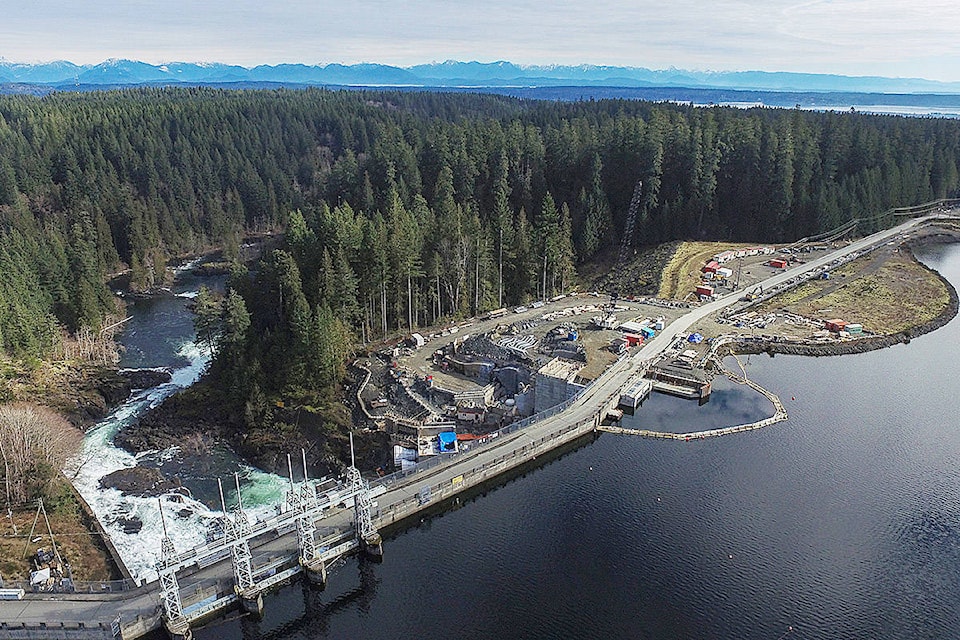BC Hydro is making water flow changes in the Campbell River system to react to the very dry conditions and for what’s forecast to be a dry and warm summer.
The dry conditions have continued since February, and a warm May has melted most of the snowpack. The month of May also marked the lowest precipitation level in 37 years of record.
BC Hydro will be reducing the water discharge from the John Hart facilities down the Campbell River today from 100 cubic metres per second (m3/s) to about 70 m3/s.
“The preferred river flow rate in May and June for fish is 100 m3/s to 128 m3/s but given the dry conditions and snow pack situation, we’ve been operating at 100 m3/s and will now drop it downward. We’ve been working with fish agencies and the status of the steelhead and salmon rearing and outmigration,” BC Hydro spokesperson Stephen Watson says. “With where the current fish lifecycle is, and out of consideration for summer reservoir level recreation targets, now is the time to reduce river flows versus the end of June per our typical water licence operations.”
BC Hydro will have biologists on the river today during the slow river flow reduction process to move any fish that may get isolated back into the Campbell River mainstem.
Precipitation has been sparse since February with the exception of April. February was 65 per cent of normal, March 26 per cent of normal, and May set a new monthly record at just 23 per cent of normal. With the majority of the snowpack melting about a month early, this was another consideration for BC Hydro operations, as well as balancing the needs for the young fish.
The system reservoirs are holding a decent amount of water for this time of the year but it looks very dry looking forward, Watson says. In the summer there is generally little rain. The water supply forecast for inflow from now to the end of September is just 68 per cent of normal, and that number may even go lower.
“This is why we are moving the river flow into a lower flow rate given the situation in for summer recreation activities in the Upper Campbell Reservoir/Butte Lake and Lower Campbell Reservoir/McIvor Lake,” Watson says. “Around July 1 we expect to lower the Campbell River to its lowest possible summer flow rate of about 30 m3/s. This is when fish are the least present in the river system.”
The Upper Campbell Reservoir/Butte Lake is currently hovering around 217 metres. The summer recreation target from mid-June to early September is 217 m to 220.5 m. BC Hydro forecasts, unless there is a significant change in the weather, that the reservoir level may dip below 217 m later this summer.
BC Hydro continues to coordinate water flows, related to the John Hart Generating Station Replacement Project, from the old and new John Hart facilities down Elk Falls Canyon and the Campbell River to maintain fish habitat flows. The current water release down Elk Falls Canyon is about 58 m3/s, and about 42 from the old John Hart powerhouse.
With the planned flow reduction today, the canyon flow will drop down to about 28 m3/s. Flows in the canyon may range from about 28 m3/s to about 48 m3/s through to early July as flow coordination activities continue.
In early July, the canyon flow will be back down to the base fish habitat flow of 4 m3/s. BC Hydro continues to advise the public to stay away from Elk Falls with the high flowing water through to early July. Temporary safety signage will remain in place until then.
